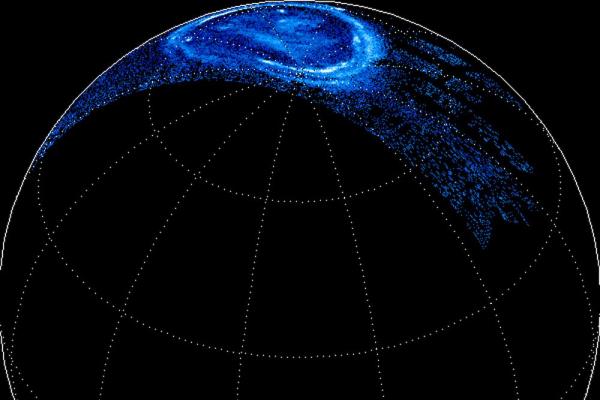
Sept. 6 (UPI) — A new analysis of Jupiter’s auroras, the most powerful in the solar system, has revealed a fresh mystery.
“At Jupiter, the brightest auroras are caused by some kind of turbulent acceleration process that we do not understand very well,” Barry Mauk, a researcher in the Applied Physics Laboratory at Johns Hopkins University, said in a news release.
Measurements of Jupiter’s auroras using particle detectors and ultraviolet spectrographs revealed extremely large electric potentials. When electric potentials on Jupiter’s poles align with the gas giant’s magnetic field, electrons stream through the upper atmosphere at at energies upwards of 400,000 electron volts.
On Earth, large electric potentials are linked with the most intense auroras. Currents of a few thousand volts are associated with what are known as “discrete auroras,” the famous colorful swirls snaking through the skies of Alaska and Scandinavia.
But when researchers looked for correlations between high electric potentials and intense auroras on Jupiter, they found no such link.
“There are hints in our latest data indicating that as the power density of the auroral generation becomes stronger and stronger, the process becomes unstable and a new acceleration process takes over,” Mauk said. “But we’ll have to keep looking at the data.”
In other words, Jupiter’s huge electric potentials at the poles don’t explain the gas giant’s massive auroras.
Jupiter exotic and dynamic atmosphere is oft studied by planetary scientists because it is capable of producing such dramatic forces. Previous research suggests Jupiter’s intense auroras drive a series of massive storms, including the Great Red Spot.
The interplay between Jupiter’s electromagnetic fields and climatic patterns could help scientists better understand other space-weather phenomena.
“The highest energies that we are observing within Jupiter’s auroral regions are formidable,” Mauk said. “These energetic particles that create the auroras are part of the story in understanding Jupiter’s radiation belts, which pose such a challenge to Juno and to upcoming spacecraft missions to Jupiter under development.”
Researchers detailed their analysis of Jovian auroras in a new paper published this week in the journal Nature.





